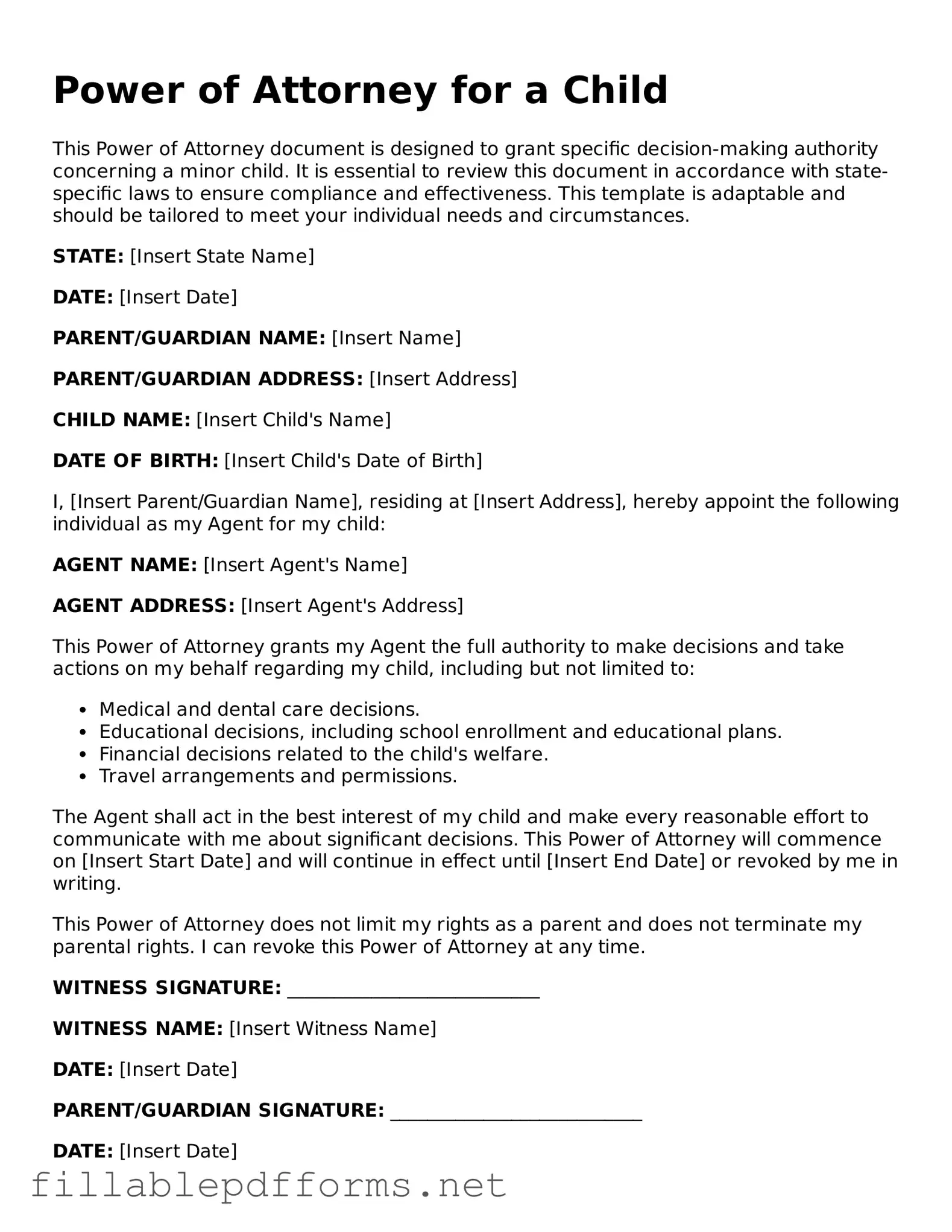Blank Power of Attorney for a Child Template
The Power of Attorney for a Child form allows a parent or legal guardian to grant temporary authority to another adult for making decisions on behalf of their child. This legal document is essential for situations where the parent cannot be present, ensuring that the child's needs are met promptly. Understanding this form is crucial for any caregiver who may step in during the parent's absence.
Launch Editor Here
